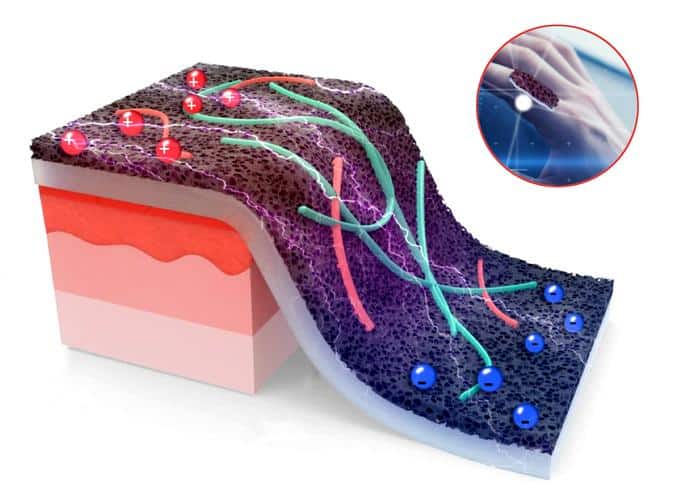In the medical field, wound monitoring has always been a headache. Traditional monitoring methods are cumbersome and often fail to provide accurate information. But recently, a new technological breakthrough could change that completely. Researchers at Penn State University and Hebei University of Technology in China have developed a new type of smart sensor that can simultaneously and independently measure the temperature and physical strain of a wound, providing doctors with a clearer picture of wound healing.
A new breakthrough in wound monitoring
Changes in temperature and physical strain are two key indicators during wound healing. A change in temperature may indicate inflammation, while a physical strain reflects the tension and healing of the wound. However, when conventional sensors measured these two metrics at the same time, they often failed to accurately distinguish between them due to overlapping signals. It's like being in a noisy room, and it's hard to hear two people talking at the same time.
To solve this problem, the researchers discovered a special material – laser-induced graphene (LIG). Not only does this material have a unique two-dimensional structure, but it has also been discovered for the first time to have thermoelectric properties. This means that it is able to convert temperature differences into electrical energy, enabling independent measurement of temperature and strain.
The magic of laser-induced graphene
Laser-induced graphene (LIG) is a material that converts the surface of a carbon-rich material, such as plastic or wood, into a graphene structure by laser. This transformation process is like using a laser to "write" a graphene pattern on the surface of the material. LIG is not only as thin as a cicada's wing, but also has excellent electrical conductivity and flexibility, making it ideal for use in the manufacture of sensors.
The researchers found that the thermoelectric properties of LIG allow it to measure temperature and strain simultaneously without interfering with each other. It's like putting "ears" on the sensor so that it can hear two people at the same time. By measuring the change in resistance, researchers can obtain strain information; By measuring the thermoelectric voltage, they can obtain temperature information.

Figure: New smart sensors: make wound monitoring no longer painful (image from network)
The magic of sensors
The new sensor not only accurately measures temperature and strain, but also has a high sensitivity. It is able to detect temperature changes as small as 0.5 degrees Celsius, which is essential for early detection of inflammation. In addition, the sensor's porous structure allows it to fit perfectly into the soft tissues of the human body without causing discomfort.
What's even more exciting is that this sensor is self-powered. Due to the thermoelectric nature of LIG, it is able to generate electrical energy when there is a difference in temperature, which provides continuous power to the sensor. This means that the sensor can operate without an external power supply, making it ideal for continuous monitoring.
The future of remote monitoring
The researchers didn't stop there. They are developing a wireless system that will enable people to remotely monitor data from sensors via smartphones or other devices. This means that doctors can know how well a patient's wound is healing anytime, anywhere, without the patient having to make frequent trips to the hospital for check-ups.
Imagine a patient recuperating at home while a doctor in the hospital monitors the temperature and strain of their wound in real time via their mobile phone. Once an abnormality is detected, doctors can take immediate action to avoid worsening the condition. This remote monitoring technology not only improves medical efficiency, but also brings great convenience to patients.
Conclusion
The advent of this new technology has revolutionized wound monitoring. Not only does it improve the accuracy of monitoring, but it also provides a more comfortable and convenient experience for patients. With the further improvement of the wireless system, this new smart sensor is expected to be widely used in clinical practice in the future, providing more powerful support for the monitoring of wound healing.
The researchers' work has not only been supported by the National Institutes of Health and the National Science Foundation, but also brings new hope to the field of medical surveillance.






